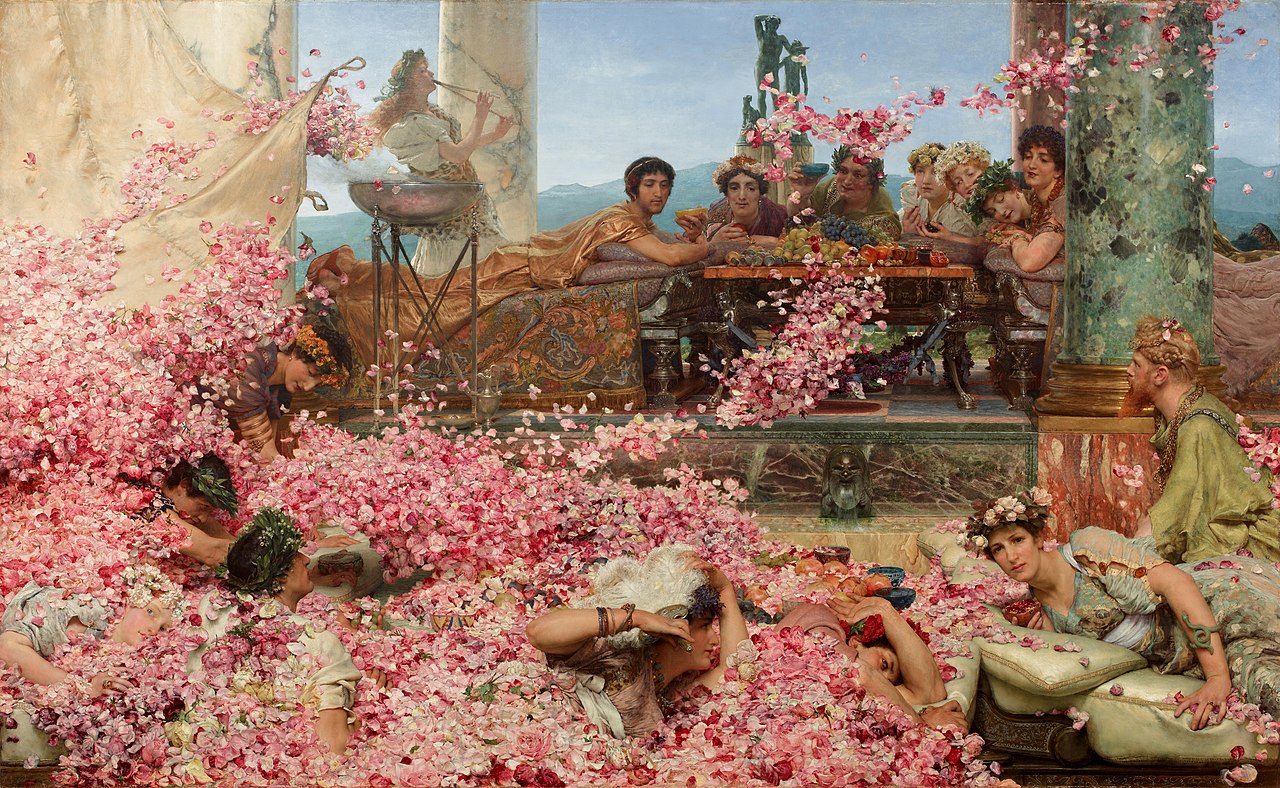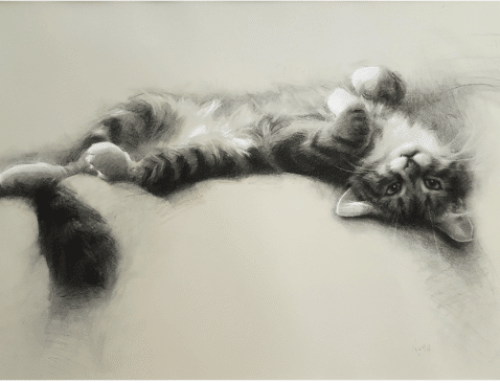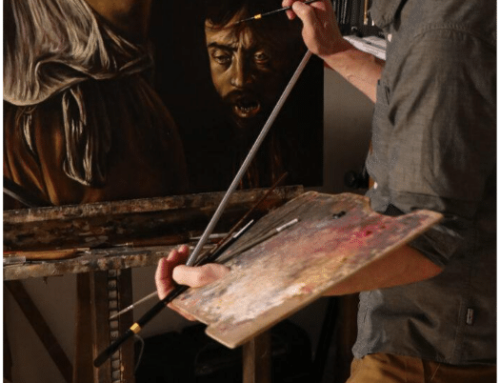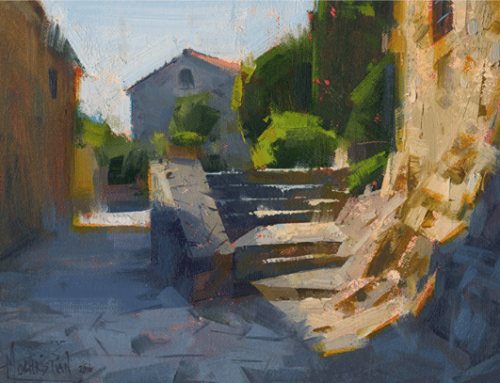One of painting’s best magic tricks is to take insane events that probably never happened and bring them vividly to life with a reality that’s one half made-up-eye-witness-truth and the other half pure, unforgettable, visual poetry.
This and more is what we get in the over-the-top 1888 painting The Roses of Heliogabalus by Dutch-English artist Sir Lawrence Alma-Tadema. It’s a masterpiece of realist painting (as are all of Sir Lawrence’s hyperreal classical fantasies), and it’s astonishing for so many reasons.
What we’re seeing is an infamous episode from Roman history – it shows a group of Roman diners at a banquet being swamped by drifts of pink rose petals and roses falling from a false canvas ceiling above. The host, the degenerate Emperor Heliogabalus, is smothering a number of his guests for the after-dinner entertainment of the select few he’s chosen to spare.
Short-lived Roman Emperor Caesar Marcus Aurelius Antoninus Augustus (203-222 AD, also known as Heliogabalus after Helios, the sun god he forced Rome to worship) was such an outrageous and offensive menace that the Roman senators hired thugs to decapitate him and his mother while he was still in his teens. True or not, the scandals of his brief reign are both colorful and hair-raising.
Sir Alma-Tadema masterfully imagines this one down to the tiniest details. How about the look on the Emperor’s face (he’s the young one to the left in this closeup)?
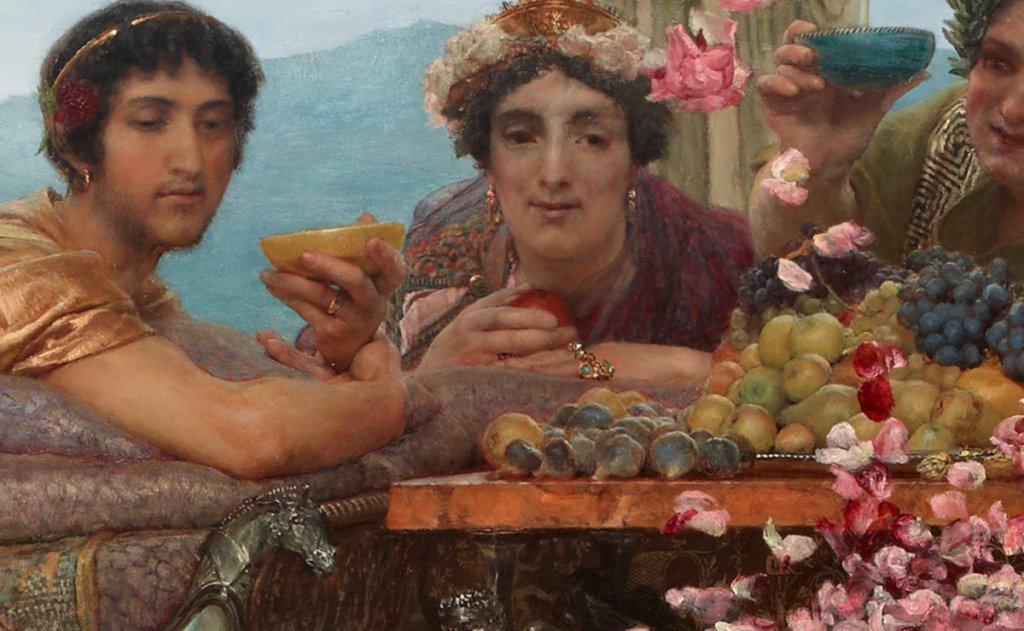
He reclines on an ornate divan couch, wearing a golden silk robe, gold earrings and tiara. He wears a rose tucked behind his ear and gazes down, pausing in mid-sip from a golden wine bowl, with a mix of bored indifference and mild amusement. One side of his mouth, the one in shadow, lifts slightly in what might almost be a sneer – if this boy could even muster disdain. It’s a stunning study in youthful cruelty.

To emphasize (darkly, of course) the “celebratory” character of the moment, a young woman plays a double pipe. The arc of her hands and head are gracefully echoed by the lines of the warmly colored marble column behind her. By the way, in this detail below, you can see on the left side still in motion the canvas sheet that held the petals above the guests until the right moment.
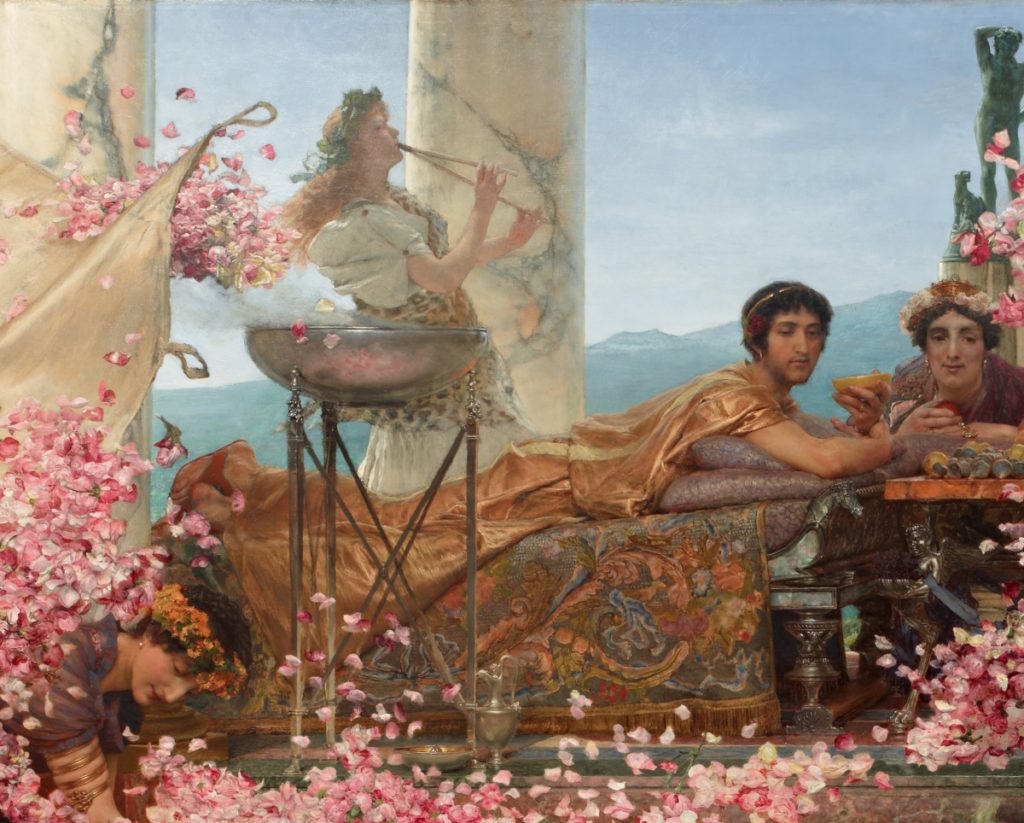
At the heart of this painting is a strangely decadent whimsy. The whole idea of scattered rose petals as a murder weapon seems like a contradiction in terms. Roses are usually associated with love, pleasure and sweetness. But such is the very definition of decadence – overindulgence in good things to the point of the sickly sweet.
If behind all this eye candy there’s a commentary on the corruption that comes with absolute power, the victims aren’t let off the hook; Alma-Tadema wants to remind us that these “victims” are power players too, social climbers who moments earlier were jockeying for favors at a dangerously capricious politician’s table. One is shown holding a silver hand mirror, a symbol of self-centered egotism, while nearby a barely visible silver wine goblet fills with petals – another wry touch.
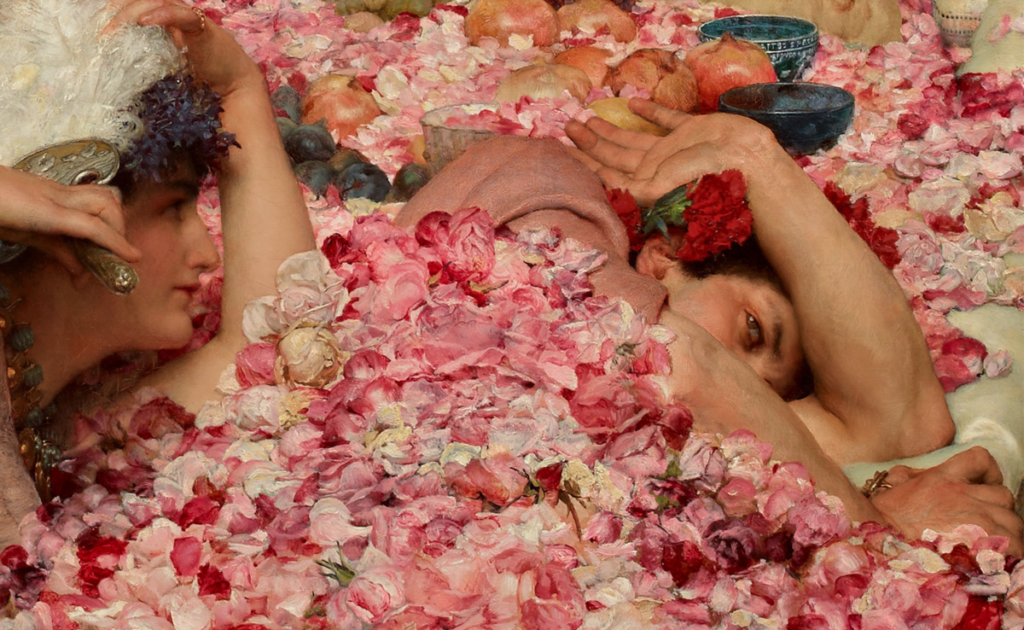
I couldn’t resist one more closeup – Alma-Tadema has the wit (and the necessary technical wizardry) to embed a symbolic still life of the entire scene in miniature:
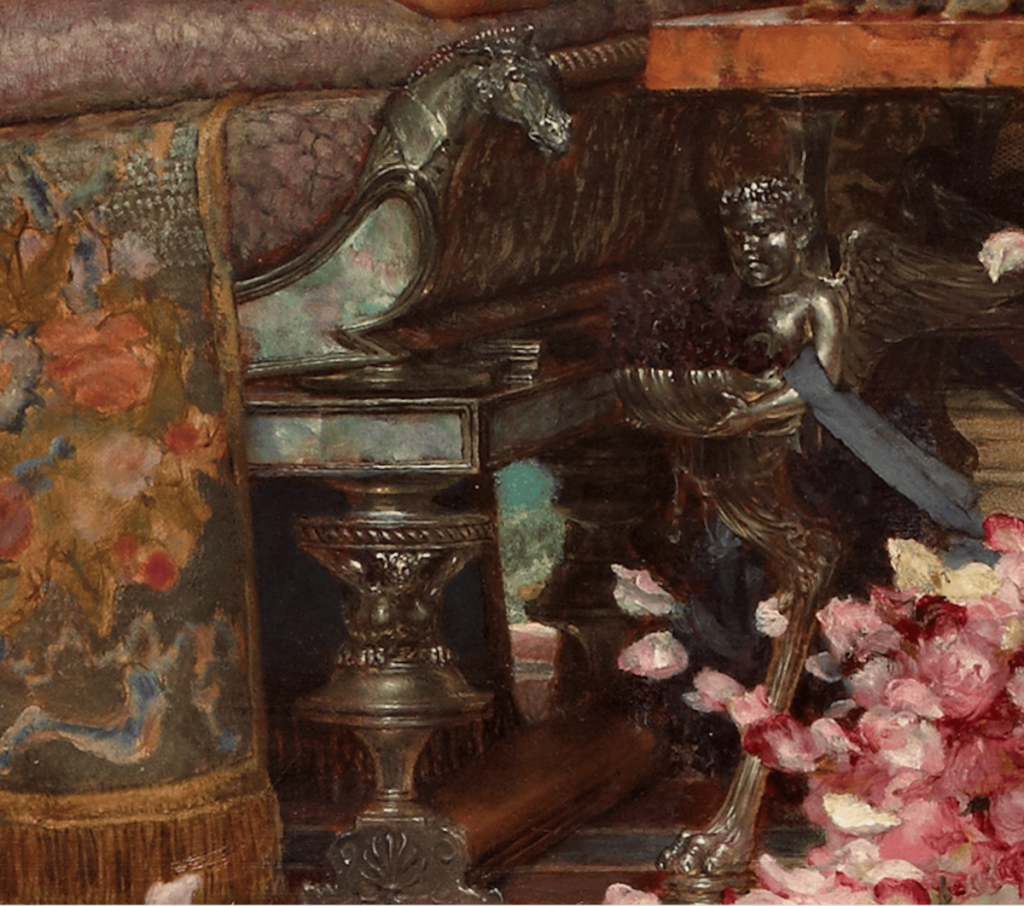
This portion of the painting is very close to the center, just under Heliogabalus’ resting elbow. Here we find, also looking down on the scene of the crime, an exquisitely rendered horse-shaped ornament in bronze (note the mother-of-pearl inlay!). Across from it, in roughly the same position as the Emperor’s nearest guest directly above, stands one of the legs of the banquet table in the shape of a small monster, half cherub and half sphinx, wearing a crown.
The master stroke: through the two couch legs we catch a tantalizing glimpse of dreamy Italian countryside – the world behind all the madness calmly and beautifully just … going on.
By the way, if you’ve ever wanted to paint roses but haven’t gotten the hang of it yet, check out this instructional video, Painting Roses with Kyle Ma. Though he demonstrates a start-to-finish floral painting for you in the four-hour tutorial, his logic and technique can apply to every painting you create.
Palette of Roses Art League celebrates 70 years

The Palette of Roses Art League, a nonprofit artist association in Tyler, Texas, celebrated its 70th year going strong in September.
The Palette of Roses Art League was officially founded in June, 1952, by a group of about 15 amateur artists who wanted to art to become more a part of the Tyler community. That November, the league held its first art show, only to be surprised when close to 1,000 people showed up and not just from Tyler, but from all over East Texas and as far as Shreveport.
“We have had a lot of just really incredible people come and move into Tyler that really moved the art league forward and did some great things for it,” league president Diane Reis told the Tyler Morning Telegraph. “It was never just an artist’s thing – it was to do something that impacts the community …. to work together and encourage one another as well as educate each other and the community.”
In the Roses,
Chris

